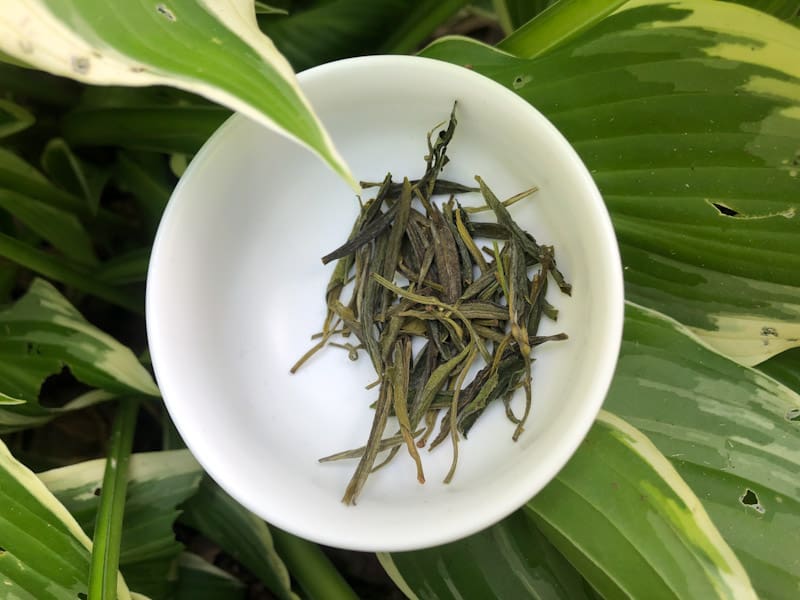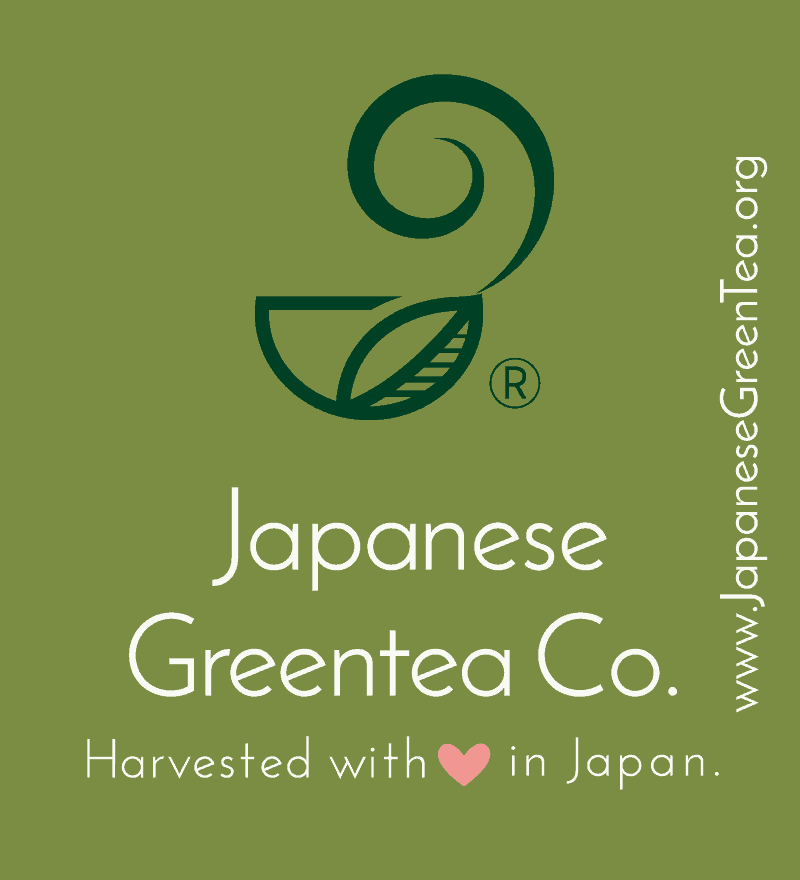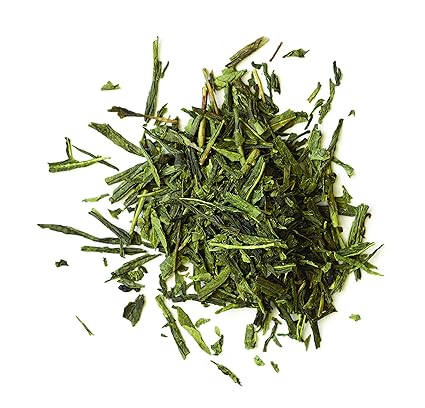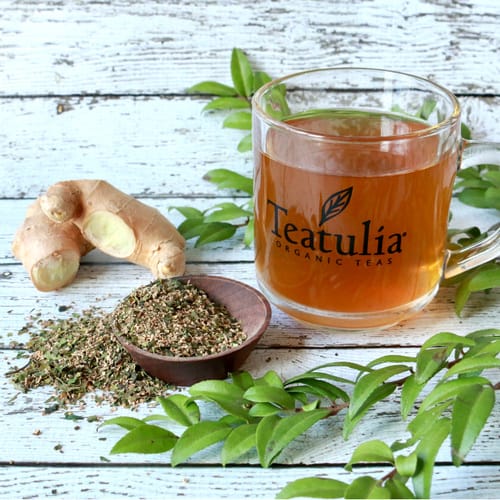Green tea can be an incredible experience. Pick the wrong brand and you will never want to drink green tea again. That is what happened to me. It came in a box, decorated with pretty green tea leaves and looked relaxing. That tea was anything but relaxing or the best green tea brand. It tasted like dirty grass. You want the best green tea you can find. Then I tasted a true green tea and the experience was enlightening.
If you are like me and have never had good pure single leaf green tea, don’t give up on green tea until you do.

Things to consider before buying green tea
A lot of consideration goes into buying any tea. Green tea is unique. The fact that a poorly processed green tea will taste like you plucked grass in your front yard.
That experience turned me off from green tea. It took the wonderful people I list below who created splendid green teas. The best green tea brands that I will stand behind because I’ve had the worst and then, was treated to the best green teas.
Some of the things to consider when purchasing green tea is:
- The tea source
- What do you know about the tea plantation/farm
- Is it single-origin
- Is the tea from one plantation or farm
- Is it organic
- It does not matter to everyone but to some, it is a concern
- How much EGCG does it contain
- Varies from brand
- Do they use pesticides
- Just because it’s from another country does not make it toxin-free
- How do the process the tea
- What processes do they use
- How fresh is it
While tea can last a long time, the fresher tea, like green tea matters
Avoid any added flavors or sweeteners
Don’t look for the best green tea brands:
- At a big box store (think Wal-Mart or Target)
- Processed in a tea bag prior to purchase
- That is not green
- That you do not know where it is sourced from
Our choice for best Japanese tea brands
Gokyuzyo translates literally to "The Highest Grade" in Japanese. One of the best green teas from a favorite in my cup.
Bancha is a very popular type of green tea in Japan. It is lower in caffeine than other types and has a nut-like flavor to it.
- 16 oz. loose whole leaf herbal tea.
- Brew 150+ cups per bag! We recommend 2-3 grams of tea per 6oz of water.
- 100% organic tea, direct from our single garden in Bangladesh
- Caffeine content: About 1/4 the amount of caffeine as a cup of coffee.
History of Japanese green tea
The history of green tea dates back 3000 years ago. People began eating the leaves from tea trees in southwest China. This evolved in the 8th century when steaming the leaves became popular. In the 12th century, frying the leaves then became the new method.
Fast forward to the 16th century. Dry heating the leaves to prevent oxidation became the new way of producing green tea. This is now the modern method used. Green tea comes from the Camellia sinensis bush, but the leaves are unoxidized. This is what differs from oolong tea and other teas. Since green tea is unoxidized, it is the least processed. This makes green tea have the most antioxidants and polyphenols. These are the nutrients in the tea that make it so beneficial. Studies have shown that polyphenols have been linked to decreasing tumor growth.
The true tea considered by many is green tea. Minimally processed causing minimal oxidation. Because of this minimal processing, green tea is rich in EECG. EECK (epigallocatechin gallate) is a powerful antioxidant.
As with most things, there is great green tea and then there is junk. First, the junk is tea bags full of tea dust. You are not going to get a good green tea in a teabag off a big box store shelf. If you think you don’t like green tea because that is your tea experience. Try single-origin loose-leaf green tea and your palate is going to be amazed.
A good green tea will have a grassy or vegetal scent. I call it an earthy tea.. The scent will be light and fresh. Because I often tell you never to judge a tea by its scent, once you brew it, that is the actual flavor and scent of the tea. Not all green teas taste grassy. Depending on your tea choice, there are many. That green tea choice will decide what level of earthiness you will have.
The best time to purchase your green tea is from the May and June harvest. This is the Spring harvest. Spring harvest is the first harvest. The spring harvest produces the most aromatic and sweet flavored tea.
Good green tea has a unique mouthfeel as well. You will want more.
Features and descriptions of green tea
Don’t choose a tea from a big box store. This tea is in bags that may contain toxins and the tea itself is dust or fannings. Tea dust is a very low-quality tea.
Choose loose leaf tea, I prefer organic. Single-origin tea is a tea that comes from a single area or plantation.
The only green tea I would add sweetener to is matcha. Matcha has a bitter taste. Adding a sweetener or eating a piece of sweet candy prior is almost always considered.
Green tea because it is so minimally processed it does not stay fresh as long as other processed teas. Make sure your tea is fresh. Green tea will stay fresh until you open the package or container. At that point, the clock is ticking and your tea starts to fade. Green tea will not last long.
If your green tea offers an antioxidant profile, use it. You want to look at epigallocatechin gallate (EGCG). EGCG is a powerful antioxidant that will vary depending on the green tea
The high levels of polyphenols are able to eliminate cells that grow out of control, such as cancer cells. A similar study focused on the skin cells that grow out of control. These cells can cause dry skin or disorders such as dandruff. Green tea is proven to slow cell growth, giving it cleaner skin. These studies have been on green tea, so other teas are unknown.
Drinking 5 cups a day may reduce the risk of cardiovascular disease. This study involved a group of 40,000 people and followed them for 11 years.

Types of Green Tea
Sencha – This is a more expensive tea, with a sweeter taste to it. It has the highest amount of polyphenols. These polyphenols are responsible for the health benefits of green tea.
Gyokuro – Gyokuro is a green tea that is grown in the shade for about three weeks. Gyokuro is from Japan. Gyokuro has umami and sweet taste.
Kabusecha – This tea, in fact, its name means “to be covered”. This tea leaf is actually covered for a period of time.
Bancha – Is a very popular type of green tea in Japan. It is lower in caffeine than other types and has a nut-like flavor to it.
Tencha – Tencha is the tea leaf that’s used for the base of matcha. Before the tea leaves are ground you can drink it as tea. Tencha is considered an elegant tea. Exclusive.
Hojicha – A Japanese green tea that is roasted and not green. Hojicha originated over 100 years ago. Because it is roasted the bitterness is removed and replaced with a more earthy flavor.
Fukamushi Sencha – Fukamushi refers to “deep steamed”. Sencha, known for its creamy, buttery texture and beautiful green color. Combined is a buttery green tea with an earthiness. The leaves are very fragile.
Ichibancha – It’s the first flush tea. But not always a Sencha tea since it may not be completely processed as a Sencha.
Genmaicha – Genmaicha is a green tea that has browned rice added to it to create a popcorn flavor. It’s considered a poor man’s tea because the brown rice extends the green tea to make it last longer.
Matcha – Powdered tea used to be the normal drink introduced by Buddist monks. Matcha is high in caffeine. It contains many more healthy properties than regular green teas.
Bi Luo Chun (Chinese) – The name means “green snail spring”. It’s a famous tea that is cultivated early and loved for its delicate robust, yet fruity floral flavor.
Mao Feng (Chinese) – The meaning of Ma Feng is “downy tip” which refers to the hairy coating on the tea leaves. The tea again is best in early spring and has a sweet, buttery flavor of sweetgrass or hay.
Chun mee (Chinese) – This green tea is not as sweet as other green teas. Its name means precious eyebrows. The tea can have a toasted or roasted yet grassy flavor.
Long Jing (Taiwan) – Also known as Dragon well tea (translated). A famous pan-roasted tea that is almost always hand prepared. The flavor is roasted, nutty, and smooth.
Kukicha – A green tea that utilizes the whole plant including the stems and stalks. The tea has a nutty smooth flavor.
Konacha – This is the dust tea I talk about often. This tea is leftover dust and leaves from the processing of Gyokuro or Sencha. Of course, a cheaper variety.
Gunpowder Green (Chinese)
- There are also a variety of green teas from India. Not as popular as Japanese or Chinese but well worth the mention.
- It is a type of green tea that is high in fluoride. The same fluoride is found in many kinds of toothpaste. The flavor of this tea is a bit smokey.
However, green tea can have negative consequences for some.
The high vitamin K content in green tea may reduce the effectiveness of blood thinners. Patients taking blood thinners have had to reduce or stop drinking green tea. There are different types of green tea, each with different components and flavors.

Conclusion
When I first started to drink tea I had no idea what to look for. I thought, is there a difference in teas? Absolutely!
When you find a good tea company and finally taste a true single-origin green tea, the difference is earth moving. It really is. Shop the best tea brands and find the best Japanese green tea to fill your cup.




